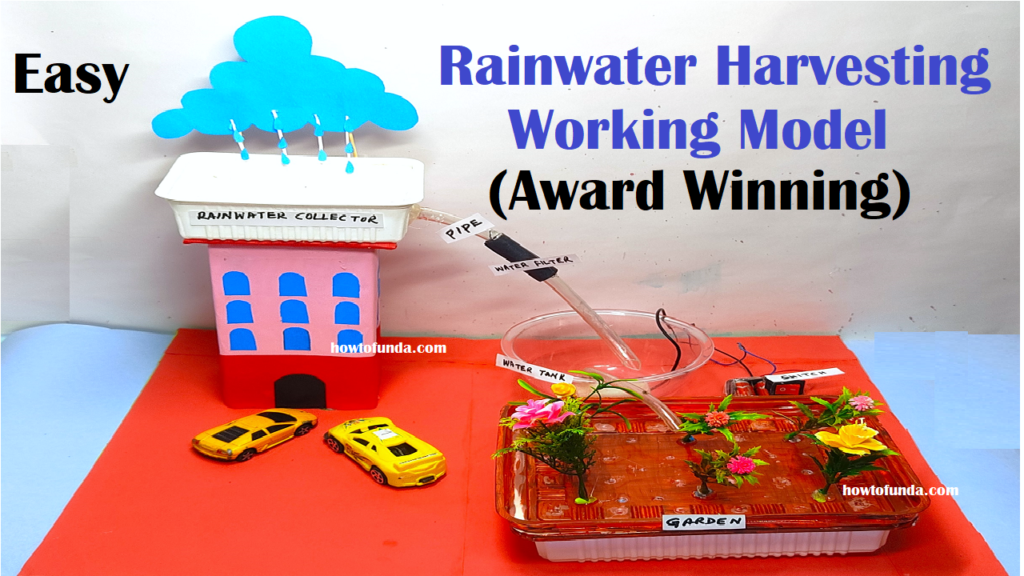Ladies and gentlemen,
Today, I am excited to share with you the findings and insights from our science project on the vital and environmentally-friendly practice of Rainwater Harvesting.

In a world where water scarcity is becoming an increasingly pressing issue, our project explores a solution that is both sustainable and readily accessible to all.
Rainwater harvesting is a practice that dates back thousands of years, but its relevance in today’s world cannot be overstated.
It involves the collection, storage, and use of rainwater for various purposes, such as irrigation, household chores, and even drinking water.
Our project aims to shed light on the benefits and importance of this practice.
So, why is rainwater harvesting so significant, and what did our project reveal?
- Water Conservation: Rainwater harvesting is an effective way to conserve water. By capturing rainwater that would otherwise run off into drains and rivers, we can reduce our reliance on groundwater and municipal water supplies. This, in turn, eases the burden on overexploited water sources.
- Cost-Efficiency: Implementing a rainwater harvesting system can lead to significant cost savings over time. It reduces water bills for households, and in agriculture, it reduces the need for expensive irrigation systems.
- Sustainability: Rainwater harvesting is a sustainable practice that can be implemented on various scales, from individual homes to large industrial complexes. It helps reduce the environmental impact of water extraction and reduces the risk of water shortages.
- Water Quality: Rainwater is typically free from the chemicals and additives often found in treated tap water. With proper filtration and treatment, harvested rainwater can be a safe and healthy source of drinking water.
- Erosion Control: Collecting rainwater can help control soil erosion by reducing the force of rainwater runoff. This is especially crucial in areas prone to flooding and landslides.
In our project, we designed and constructed a rainwater harvesting system to demonstrate its functionality.
We set up a collection system to capture rainwater from rooftops, directing it into storage tanks equipped with filtration and purification mechanisms.
Our experiments showed that rainwater collected through this method met or exceeded the quality of tap water, making it suitable for various household uses.
Our project also emphasized the importance of proper maintenance and sanitation to ensure the stored rainwater remains safe and potable.
Additionally, we shared guidelines for anyone interested in implementing rainwater harvesting systems in their homes or communities.
In conclusion, rainwater harvesting is not just a theoretical concept; it is a practical and environmentally responsible solution to address water scarcity issues.
By harnessing the power of nature, we can secure a sustainable source of water for ourselves and future generations.
I hope our project has inspired you to consider rainwater harvesting as a viable and eco-friendly way to address water shortages.
By promoting awareness and encouraging its adoption, we can collectively contribute to a more sustainable and water-secure future.
Thank you for your attention.

